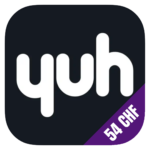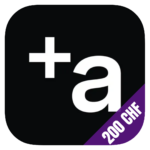The Swiss banking landscape is evolving rapidly, and 2025 marks a new milestone in the competition between traditional banks and neobanks. While large ...
Revolut Switzerland now offers a Swiss IBAN (CH) for its clients in Switzerland. This new feature helps avoid transfer fees imposed by some Swiss banks ...
Yuh is preparing to launch its joint account, a simple and practical solution for managing shared finances. Designed for couples, roommates, or friends, this ...
Radicant now offers a euro (EUR) account designed to facilitate cross-border financial transactions, with SEPA payment management, reduced conversion fees, ...
If you compare radicant with Neon, you are probably looking for a convenient banking solution, whether it's for managing your money on a daily basis, ...
Alpian is a Swiss neobank that now offers an ETF savings plan: Managed by Alpian Essentials.This savings plan, accessible from 2,000 CHF, provides a simple ...
If you're comparing Alpian with Revolut Switzerland, you're likely looking for a multi-currency account for travel, international transactions, investing, or ...
Alpian is a Swiss neobank offering an investment service called Guided by Alpian. This is an all-in-one solution where all transaction fees are included, ...
The Swiss pension system is based on three essential pillars. The 3rd pillar, also known as private pension, plays a crucial role in individuals' financial ...
Neon Bank (rated ) recently launched Finsights, an innovative feature based on artificial intelligence (AI). This tool allows you to analyze and optimize your ...


















Thank you very much for your insightful comment — it’s great to hear from someone who also uses Managed by Alpian.
You’re absolutely right about the fees. From my own portfolio, the Quarterly Management Fee entries confirm a 0.75% annual management fee, charged quarterly (around 0.1875% per quarter). For “Signature” clients, it’s indeed 0.69% per year. On top of that, there’s the TER of the ETFs used in the portfolio, usually between 0.10% and 0.30%, which brings the total cost close to 1%, as you mentioned.
Regarding the portfolio adjustments, what I’ve observed matches your description — small tactical reallocations, typically every couple of months. Alpian’s approach seems to favour strategic stability with limited active moves, which fits their digital private banking philosophy rather than short-term tactical trading.
Thanks again for sharing your experience — it’s always valuable to compare real-life feedback from other users!
Thanks a lot for your comment and for confirming this from a client’s perspective — that’s incredibly helpful.
If the app today only shows ITD (Inception-To-Date) performance without specifying that it’s TWR, and there’s no other breakdown (like TWR vs. MWR), then it’s fair to say that the methodology is unclear. You’re absolutely right: this makes it hard — if not impossible — to compare Alpian’s performance with other platforms that explicitly report TWR.
I originally received confirmation from Alpian that TWR was used, but clearly the current user experience doesn’t reflect that. I really appreciate your feedback, and I’ll update the review to flag this more transparently for readers.
Thank you very much for your detailed follow-up — and no worries at all about reposting!
You’re absolutely right to highlight the discrepancy. I did originally check with Alpian, and they stated that the performance figure was based on TWR (Time-Weighted Rate of Return), which is the GIPS-recommended standard. However, your observation is very valid: the earlier screenshot showed “TWR 3.7% (ITD)”, but today neither the app nor their website seems to mention TWR anymore.
If clients are now only seeing P/L (ITD), that strongly suggests a shift — either in reporting methodology or simply in transparency. And yes, P/L is not equivalent to TWR. This definitely makes comparisons with other banks and robo-advisors more difficult, which contradicts Alpian’s original claim of standardised reporting.
Thank you again for your insightful contribution — I’ll add a note to the article to reflect this concern more clearly. You’re helping make this resource better for everyone!
Thank you for your comment, I double checked with Alpian and this is what they say: This refers to TWR performance (time-weighted), which is the industry-standard practice (per the GIPS recommendations). It allows you to compare one platform’s performance to another’s by excluding the impact of cash flows.
All Swiss bank will comply with Automatic Exchange of Information.